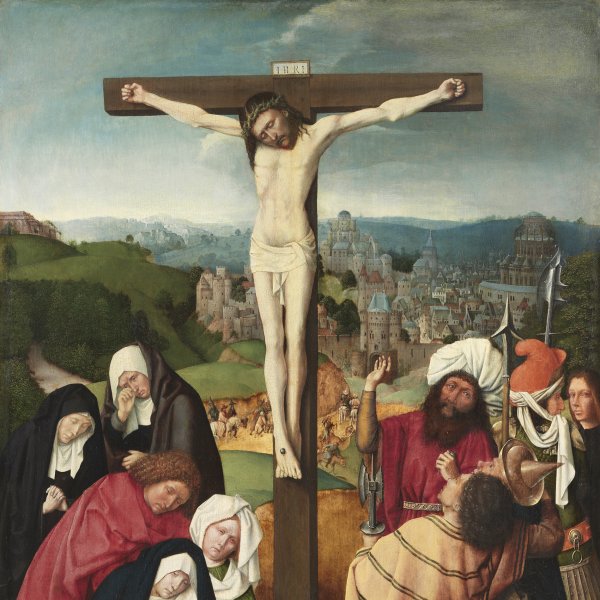Gerard David
Oudewater, ca. 1455-Bruges, 1523
Gerard David was born in Oudewater, near Gouda, in 1455. It has been suggested that he trained with the painters Albert van Ouwater and Geertgen tot Sint Jans, although there is no documentary proof to confirm this idea. It is also very likely that he spent time in Louvain in the workshop of Dirk Bouts where he may have collaborated with Bouts’ sons. David’s name is first registered in the painters’ guild in Bruges in 1484, an institution in which he occupied important positions over the course of his life. David never left his native city although in 1515 he is also mentioned in the painters’ guild in Antwerp.
His oeuvre comprises around sixty autograph works and a number of illuminated books such as the Book of Hours now in the library at El Escorial. The use of the sfumato technique in his paintings has led to the suggestion that he travelled to Italy. David’s style falls into various different periods. The first one, from 1484 to 1490, reveals the influence of Dirck Bouts, particularly in the composition of the landscape, and of Jan van Eyck with regard to the figures and details. Works from this period include The Crucifixion (Museo Thyssen-Bornemisza, Madrid) and The Nativity (The Metropolitan Museum of Art, New York). David’s only two documented works, the Justice Diptych (Cambises) of 1498 and the Virgo inter Virgines (Musée des Beaux-Arts, Rouen) of 1509, fall within his mature period, of which another notable example is the triptych with The Baptism of Christ (Groeningemuseum, Bruges) of 1502–8. During his last period, between 1510 and 1515, he added secular elements to his religious motifs with the aim of adapting them to the new times, for example The Virgin and Child with a Bowl of Milk (Musées Royaux des Beaux-Arts, Brussels), and The Rest on the Flight into Egypt (Museo Nacional del Prado, Madrid).
David was an important artist not just for the markedly high quality of his work but also for his innovations with regard to subject matter and the organisation of his workshop. He is considered a forerunner of landscape painting, in which he laid the way for the development of the genre in the work of Joachim Patinir. Lastly, David’s work combined the best elements of the great Flemish masters such as Campin, Van Eyck, Van der Weyden and Van der Goes, whose styles he interpreted in his own manner. His most important pupils were Ambrosius Benson and Adriaen Isenbrandt who disseminated his style across Europe.
His oeuvre comprises around sixty autograph works and a number of illuminated books such as the Book of Hours now in the library at El Escorial. The use of the sfumato technique in his paintings has led to the suggestion that he travelled to Italy. David’s style falls into various different periods. The first one, from 1484 to 1490, reveals the influence of Dirck Bouts, particularly in the composition of the landscape, and of Jan van Eyck with regard to the figures and details. Works from this period include The Crucifixion (Museo Thyssen-Bornemisza, Madrid) and The Nativity (The Metropolitan Museum of Art, New York). David’s only two documented works, the Justice Diptych (Cambises) of 1498 and the Virgo inter Virgines (Musée des Beaux-Arts, Rouen) of 1509, fall within his mature period, of which another notable example is the triptych with The Baptism of Christ (Groeningemuseum, Bruges) of 1502–8. During his last period, between 1510 and 1515, he added secular elements to his religious motifs with the aim of adapting them to the new times, for example The Virgin and Child with a Bowl of Milk (Musées Royaux des Beaux-Arts, Brussels), and The Rest on the Flight into Egypt (Museo Nacional del Prado, Madrid).
David was an important artist not just for the markedly high quality of his work but also for his innovations with regard to subject matter and the organisation of his workshop. He is considered a forerunner of landscape painting, in which he laid the way for the development of the genre in the work of Joachim Patinir. Lastly, David’s work combined the best elements of the great Flemish masters such as Campin, Van Eyck, Van der Weyden and Van der Goes, whose styles he interpreted in his own manner. His most important pupils were Ambrosius Benson and Adriaen Isenbrandt who disseminated his style across Europe.





